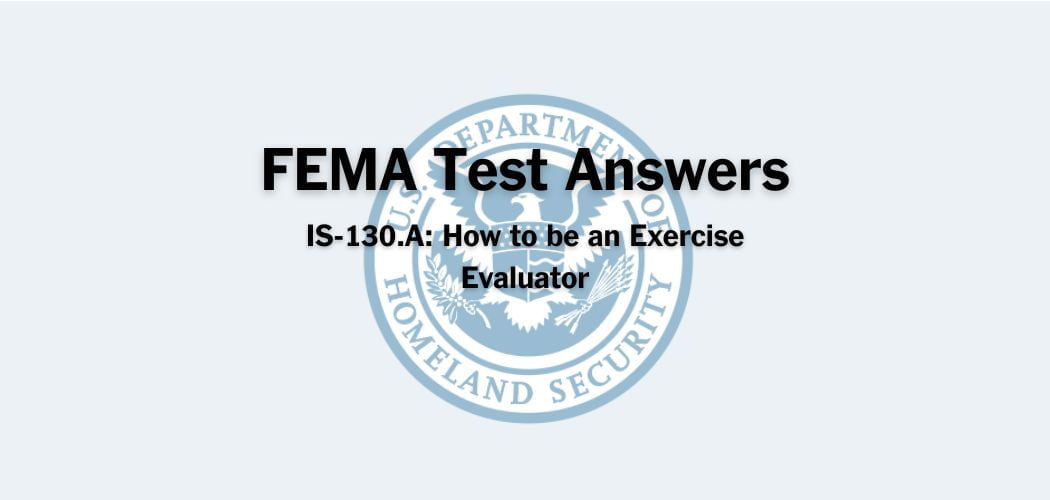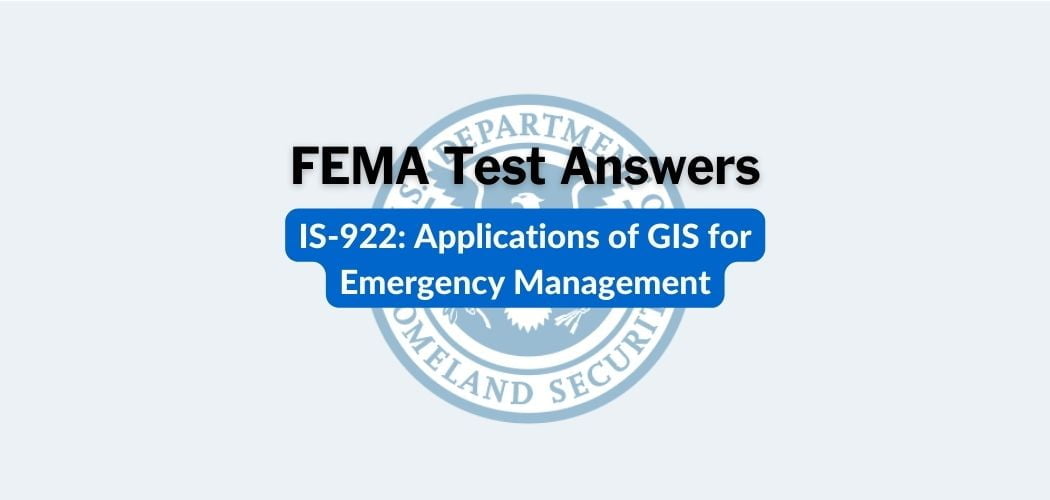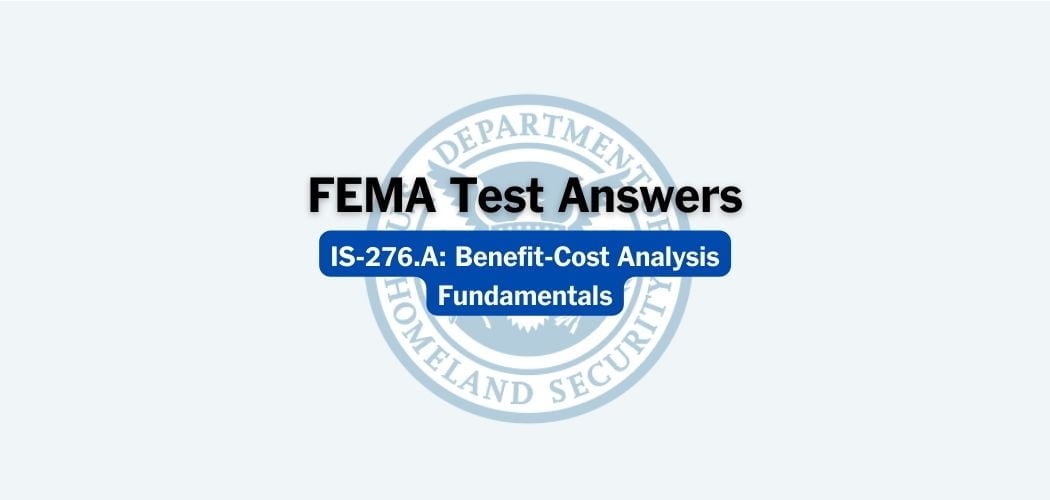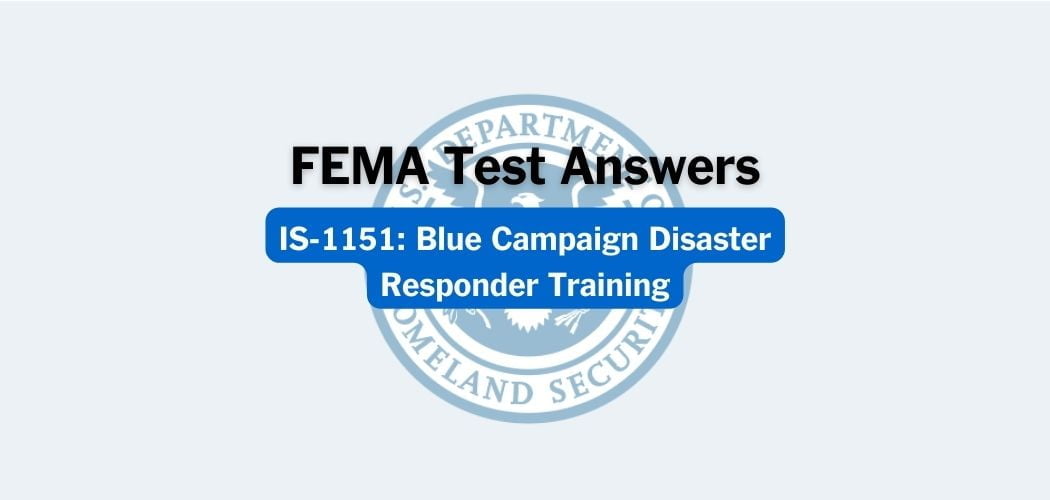Overview: The FEMA IS-403 course was published on 3/1/2021 to provide FEMA personnel and partners with a basic knowledge of the Individual Assistance (IA) Program and activities that help individuals and households recover following a disaster.
Primary audience: IS-403 is for FEMA Employees and State IA Officers. The learner must achieve a minimum passing score of 75% on final knowledge assessments or demonstrate mastery on performance assessments or research assignments to earn the IACET CEU.
FEMA IS-403 test answers
Each time this test is loaded, you will receive a unique set of questions and answers. The test questions are scrambled to protect the integrity of the exam.
Question 1. Which of the following statements best describes the Disaster Recovery Center (DRC)?
A. This facility provides a helpline, manages registration intake, and processes eligibility determinations.
B. This facility is the administrative or management command center of the disaster.
C. This is a readily accessible fixed facility or mobile office where people affected by a disaster may go for assistance or information.✅
D. This readily accessible facility provides long-term needs to disaster survivors.
Question 2. Which IA program below includes Housing Assistance (HA) and Other Needs Assistance (ONA)?
A. Small Business Administration
B. Mass Care and Emergency Assistance
C. Individuals and Households Program✅
D. Crisis Counseling Program
Question 3. Housing Assistance comes in two forms. One is Financial. What is the other?
A. Housing Construction
B. Replacement
C. Direct✅
D. Repair
Question 4. Which of the following is a physical facility that is used when multiple disasters occur in a close proximity of time and space?
A. Joint Field Office
B. Transitional Recovery Office
C. Area Field Office✅
D. Disaster Recovery Center
Question 5. Which IA program offers low-interest disaster loans to homeowners and renters for resorting or replacing disaster-damaged, uninsured real and personal property?
A. Small Business Administration✅
B. Cora Brown Fund
C. Individuals and Households Program
D. Disaster Unemployment Assistance
Question 6. Which of the following statements accurately describe the Stafford Act?
A. It authorizes the Governor to issue a major disaster declaration to provide Federal aid.
B. It provides a list of voluntary agencies from which State, local, and tribal governments are allowed to accept aid.
C. It defines the types of aid that State governments can provide to affected areas.
D. It defines the relationship between Federal, State, local, and voluntary agencies for disaster efforts.✅
Question 7. Which of the following are factors considered by FEMA when developing a recommendation to the President for supplemental disaster assistance?
A. Amount of Federal assistance already received after previous events
B. Number of disasters elsewhere in the country in the same year
C. Impact on the infrastructure of affected areas✅
D. Frequency of disaster events over the past five-year period
Question 8. To which OFA partner agency would you refer a disaster survivor for help with declaring uninsured casualty losses?
A. US Department of Agriculture
B. Department of Veterans Affairs
C. Internal Revenue Service✅
D. Social Security Administration
Question 9. What is the first step in the Sequence of Delivery?
A. Cora Brown Fund (CBF)
B. Emergency Assistance (Voluntary Agencies)✅
C. Other Needs Assistance (ONA)
D. Small Business Administration (SBA)
Question 10. Which of the following statements best describes the Sequence of Delivery?
A. It is the order in which a disaster-affected area may request a Presidential Disaster Declaration to receive Federal aid.
B. It is the order of assistance that varies from state to state.
C. It is the specific order in which assistance is provided to disaster survivors through FEMA.✅
D. It helps ensure that states and local jurisdictions have the resources they need to recover and rebuild after a disaster.
Question 11. The Stafford Act authorizes the President to do which of the following?
A. Define the relationship among Federal, State, local, and voluntary agencies for disaster efforts.
B. Define the cost-sharing arrangements between Federal, State, and tribal governments.
C. Issue a major disaster declaration to provide Federal aid to states overwhelmed by disasters.✅
D. Determine the types of Federal assistance FEMA may provide.
Question 12. Which statement best describes the biggest factor FEMA considers when determining whether to recommend Federal disaster assistance?
A. Whether or not the state and local jurisdictions have the resources available to meet the recovery needs✅
B. The likelihood that similar disaster events will occur in the future affecting the same areas
C. The amount of Federal funding for disaster assistance that has already been committed nationwide in the current year
D. The frequency of similar disaster events over a recent time period in the affected area and neighboring states
Question 13. Which of the following statements best describes the Joint Field Office (JFO)?
A. This facility provides a helpline, manages registration intake, and processes eligibility determinations.✅
B. This facility is the administrative or management command center of the disaster.
C. This is a readily accessible fixed facility or mobile office where people affected by a disaster may go for assistance or information.
D. This readily accessible facility provides long-term needs to disaster survivors.
Question 14. Which type of Housing Assistance is used by the applicant to purchase or make a down payment on a new home?
A. Repair
B. Housing Construction
C. Temporary Housing Assistance
D. Replacement✅
Question 15. After an incident occurs, and a formal PDA request is made to the FEMA Region, what is typically the next step in the process to obtain a Presidential Disaster Declaration?
A. The Governor requests a major disaster declaration.
B. A Formal PDA request is made to the FEMA Region.
C. FEMA headquarters recommends a course of action.
D. Representatives from the State, FEMA, and Small Business Association (SBA) conduct joint PDAs✅
Question 16. Which OFA partner agency has a program that provides loans to low-income rural residents and communities to buy, build, or repair housing?
A. US Department of Agriculture✅
B. Department of Veterans Affairs
C. Internal Revenue Service
D. Social Security Administration
Question 17. After the Region submits a separate RSAR to FEMA headquarters with its recommendations, what is typically the next step in the process to obtain a Presidential Disaster Declaration?
A. The Governor requests a major disaster declaration.
B. A Formal PDA request is made to the FEMA Region.
C. FEMA headquarters recommends a course of action to the President.✅
D. Representatives from the State, FEMA, and Small Business Association (SBA) conduct joint PDAs
Question 18. Which one of the following depicts the order of components in the Sequence of Delivery for Disaster Assistance?
A. Housing Assistance followed by Insurance
B. SBA followed by Voluntary Agencies, then by Insurance
C. Insurance followed by Housing Assistance✅
D. Voluntary Agencies followed by SBA, then by Insurance
Question 19. Which of the following services do NPSCs provide to disaster survivors?
A. Long-term recovery
B. Administrative Reporting
C. Crisis Counseling
D. Eligibility Determinations✅
Question 20. Which term applies to the order in which assistance is provided to disaster survivors through FEMA, to help ensure that applicants receive all the assistance they are legally entitled to without duplication of benefits?
A. Sequence of Delivery✅
B. Individual Assistance Order
C. Cycle of Disaster Relief
D. Disaster Declaration Process



